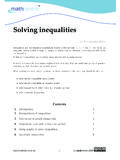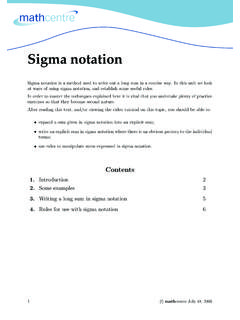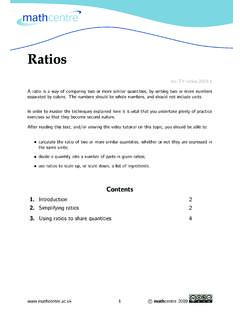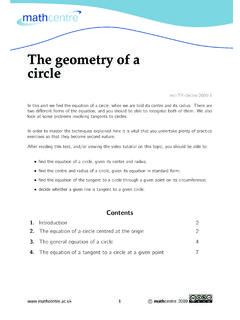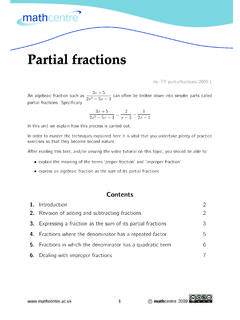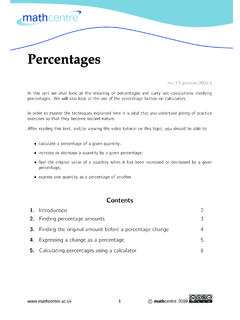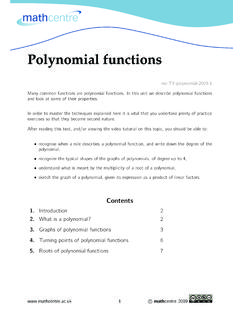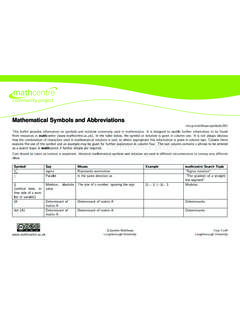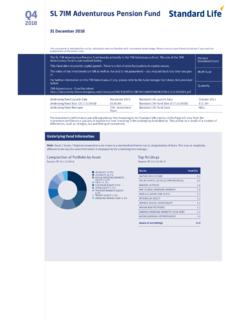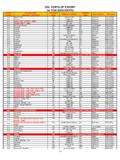Transcription of 7.7 The exponential form - mathcentre.ac.uk
1 exponential formIntroductionIn addition to the cartesian and polar forms of a complex number there is a third form in whicha complex number may be written - theexponential form . In this leaflet we explain this Euler s relationsTwo important results in complex number theory are known asEuler s relations. These linkthe exponential function and the trigonometric state:Euler s relations:ej = cos +jsin ,e j = cos jsin The derivation of these relations is beyond the scope of thisleaflet. By firstly adding, and thensubtracting, Euler s relations we can obtain expressions for the trigonometric functions in termsof exponential functions. Try this!cos =ej + e j 2,sin =ej e j 2j2. The exponential form of a complex numberUsing the polar form , a complex number with modulusrand argument may be writtenz=r(cos +jsin )It follows immediately from Euler s relations that we can also write this complex number inexponential formasz=rej.
2 exponential formz=rej When using this form you should ensure that all angles are measured in radiansand not the modulus and argument of the following complex numbers:a)z= 5ej /6,b)z= ,c) 3e j /2, d) Pearson Education Ltd2000 SolutionIn each case compare the given number with the standard formz=rej to identify the modulusrand the argument .a) The modulus and argument of 5ej /6are 5 and ) The modulus and argument of and ) The modulus and argument of 3e j /2are 3 and ) The number 5e2is purely real, and can be evaluated using a calculator. Its modulus is its argument is the real and imaginary parts ofz= that ej = cos +jsin . Then5e2j= 5(cos 2 +jsin 2)= 5 cos 2 + (5 sin 2)jThe real part is 5 cos 2 which equals The imaginary part is 5 sin 2, that is (to 2 dp).ExampleExpress the numberz= 3 + 3jin exponential express a number in exponential form we must first find its modulus and argument.
3 Themodulus of 3 + 3jis 32+ 32= 18. The complex number lies in the first quadrant of theArgand diagram and so its argument is given by = tan 133= 4. Thusz= 3 + 3j= 18ej /4 Exercises1. State the modulus and argument of each of the following complex numbers:a) , b) 4e j2 /3, c) e2 j, d) Express each of the following in the formrej .a) 3 ( /3), b) 2 ( /4), c) 3 ( /4), d) 5 0, e) 17 ( /2).3. Express each of the following in the forma+ ) 13ej /3, b) 13e j /3, c) 4e2 j, d) Show that e1+3jis equal to e1e3j. Hence deduce e1+3j= + a) 5, radians, b) 4, 2 /3 radians, c) 1,2 radians, d) , a) 3ej /3, b) 2ej /4, c) 3e j /4, d) 5e0= 5, e) 17ej a) + , b) , c) 4, d) + Pearson Education Ltd2000
